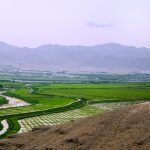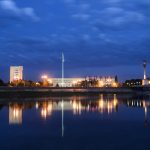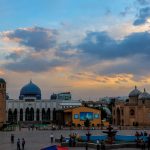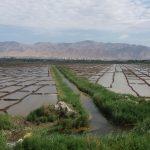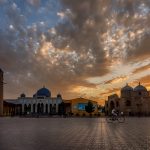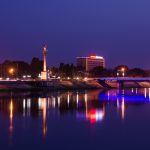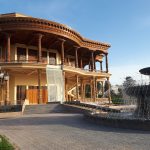The second-largest city in Tajikistan, Khujand’s history traces back over 2,500 eventful years. It is one of the oldest cities – not just in Tajikistan but in all of Central Asia – with an extraordinary culture that is well worth unpicking on your next Khujand holiday.
Over the course of thousands of years, Khujand has been known by several names, occupied by a series of rulers who lusted after its enviable location as the Greek Empire’s most northerly outpost in Central Asia. First established as Cyropolis in 544 BCE by King Cyrus the Great, the leader of the Achaemenid Empire, it was conquered by Alexander the Great in 329 BCE and renamed Alexandria Eschate (the Furthest).
Later, in the 8th-century, Khujand was invaded again, this time by the Muslim armies of Umayyad Caliphate who brought with them the kernels of Islamic culture. After changing hands several times, Khujand was eventually destroyed in the 13th-century by Ghengis Khan’s Mongolian army and rebuilt in the 20th-century as Leninabad, part of the Soviet Union. It was only fairly recently, in 1991, that the city became known as present-day Khujand – now the capital of Sughd, the northernmost province.
It is this rich and diverse history that makes visiting Khujand so rewarding. With a prominent position along the Great Silk Road, linking Samarkand and the Ferghana Valley, Khujand is a historical trading hub and a melting pot of Islamic, Greek, Russian, and Persian influences. Apart from being rich in fascinating historical landmarks, detailing the city’s sordid past, it’s also the industrial, scientific and cultural center of Northern Tajikistan – and rightly so.
Some of the best attractions in Khujand include a theater, a regional history museum, an archaeological museum, the prestigious Khujand State University, and Panjshanbe Bazaar – one of the largest undercover markets in Central Asia – all of which are well worth a visit on your next Khujand vacation.
And visiting Khujand has never been easier thanks to the international Khujand airport. Plus, a temperate climate of hot summers and mild winters makes Khujand weather ideal for year-round travel. With a backdrop of snow-capped mountains and characterized by golden-domed mosques, ancient citadels, historic museums, bustling bazaars, apricot orchards, and friendly locals, Khujand remains totally untouristy – but that is all part of its charm.
On warm days, one of the best things to do in Khujand is to hang with the locals at the Kayrakkum Reservoir – a hotspot for swimming, sunbathing, or lakeside fishing. History buffs will enjoy tracing the city’s history back through its monuments and museums. Some of Khujand’s top attractions include the Ismoil Somoni monument in Somoni Park – check out the colorful mosaics detailing Tajikistan’s history through symbolic flags and Soviet images – and the Lenin Statue in Victory Park (the largest in Central Asia).
Other Khujand attractions include a World War II memorial, the Sheikh Muslihiddin Mausoleum (the final resting place of a 12th-century ruler and poet) and the Arbob Cultural Palace. Don’t miss the Khujand Citadel, home to the Historical Museum of Sughd. Dating back to the 5th-century BC, it is one of the oldest fortifications in Central Asia!
The best Khujand tours will offer you a good dose of Tajikistani culture. Explore the Masjid Jami Mosque and watch a show at the Kamoli Khujandi Theatre with its impressive painted ceilings. Kids will love Navruzgoh Park with its carousel, boat rides and Ferris wheel and a visit to the mysterious abandoned Soviet airplane on the riverbank.
If you are still wondering what to do in Khujand take the cable car from Somoni Park at sunset. It offers incredible views and is a couple’s favorite. Alternatively, take a boat ride along the Syrdarya from Kamal Khojandi Park and – if you are feeling adventurous – hike the mountains for a one-of-a-kind view over the city. If you have time, we highly recommend making the journey from Khujand to Dushanbe, Tajikistan’s capital.






